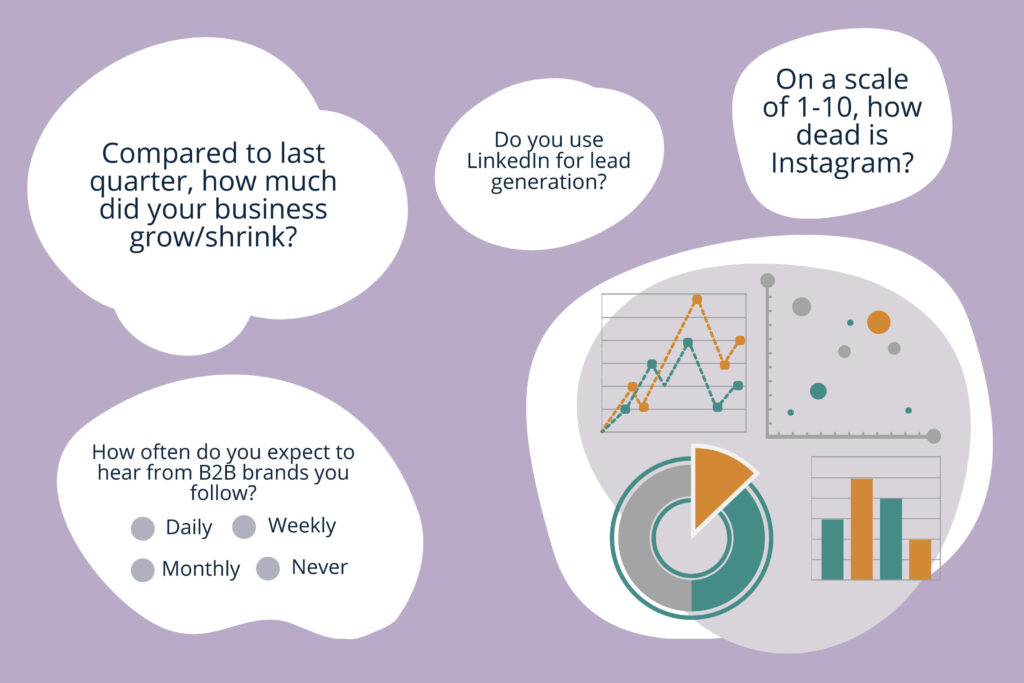
If you’re planning some good quality blog content for your B2B audience, I think that one of the most important things to get right is your sources.
In other words… you need to figure out where you’re going to get your information from.
This matters more in B2B because business audiences generally expect to read content that’s of a higher standard. They’re smart people, busy at work, and probably looking to solve a specific problem (they’re not just browsing your website for the fun of it). This means:
- Your content needs to be intelligent
- Your claims should be backed up
- It shouldn’t just be regurgitation of everything else that’s already on the internet
And the logical conclusion from this is quality B2B content requires reliable sources.
Why Good Sources Matter
In my job, I read a lot of blog articles to see what I’m up against each time I create new content for clients. Most of the time, competing pieces fall short on their sources and attributions… and that might be part of the reason why a lot of the blog content I create does pretty well for my clients.
I mean, if I was a certain popular search engine* looking to serve up the best quality content, it wouldn’t be too hard to figure out which content used reliable sources and attributed them, and which content did not. If all other factors were equal, I’d serve the quality content at the top of the search results.
Just like if I was a smart audience member looking to work with an organisation that really knew their stuff, I’d probably pick the one that had intelligent, factually correct content.
* By the way, the most recent major Google algorithm update was in March 2024, with a focus on improving the quality of search results. According to Google, this update aims to “surface the most helpful information on the web and reduce unoriginal content”. As always, anything that improves your content quality should work in your favour with Google.
3 Potential Sources for Quality Blog Content
There are three main ways I get sources to create quality blog content. You might like to use one or a mixture of the three, depending on the topic and what you have access to.
Using Subject Matter Experts

Sometimes the best source for your content is a subject matter expert — someone with experience and expertise. After all, readers want to learn from people with lived experience and hear their stories.
Inside most businesses, there are many super smart people who have a great story to tell and loads of valuable information in their heads. But most internal subject matter experts are too busy doing their day-to-day jobs to create quality blog articles. Fortunately, a good B2B writer can hop on a Zoom call, extract information and stories very quickly, and then assemble them into quality blog articles and other forms of content.
There may also be external subject matter experts outside of your business that could contribute to your content. If you can establish someone’s credibility (position, qualifications, experience), you can interview them and quote them as a source. You see this done in news articles all the time, but it’s also a great option for B2B content like blogs and case studies.
Conducting Primary Research

I think that the gold standard would have to be primary research — in other words, generate the data yourself. This means you’re creating something new in the world. Something that other people will probably want to read, share, and link to.
There are a number of ways you can do this, such as:
- Surveys – If you have an audience, you can collect data from them (with their permission and consent). You could run a survey to find out about their experience, habits, challenges, and so on. A fellow B2B writer I follow online, Jennifer Goforth Gregory, does a fantastic job of this with her regular surveys which she uses to report on the state of freelancing.
- Product Usage – If you own a software product or SaaS, you could tap into meaningful data from that (again, only with permission).
- Software Analytics – You might have a software subscription that provides data you can analyse and discuss. For example, I could use my keyword research tool to look at the volume of searches for a group of keywords in different regions — and use this to talk about the importance of localising your copy to audiences that use different terms.
- Publicly Available Sources – You could also gather data from publicly available sources that aren’t typically analysed. For example, I could analyse the top 10 blogs for 50 popular B2B search terms and report on the average length of blogs.
Of course, the challenge with this is that it can be very time consuming and you may end up with something that’s not actually meaningful, especially if you struggle to get enough responses or data.
Conducting Secondary Research

Secondary research involves seeking out data and studies that other people have already done to help to tell a story or back up your claims.
It’s something I do with most of my blogs, whitepapers, and eBooks because it’s generally quite efficient to do and there’s often a lot of valuable information already out there.
Relying on secondary research means you’re not bringing anything new to the table that hasn’t already been discovered or said (which is why I don’t consider it the “gold standard”). But it can still be extremely valuable, as it means you can combine different sources together to support an argument or make the information more digestible for your audience. And you can certainly use secondary sources to create good quality B2B content, especially if you’re good at research.
What’s a good secondary source? In general, a good source is something that is relevant, reliable, and independent. And ideally, doesn’t require you to jump through too many hoops to read it!
I recommend looking for information on:
- Industry association websites
- Government websites
- Academic journals (even if you just link to the abstract)
- Peer-reviewed journals (these are considered a very credible source)
- Major consulting firm websites and university websites (especially if they share results/data from their studies)
- Websites that provide data you can quote
And I recommend you avoid using competitor websites as your attributed sources. After all, you don’t want a customer to read your blog and follow a link through to your competitor’s website.
Unfortunately, sometimes secondary sources prove to be less than reliable or fall out of favour. For example, I have (in the past) referenced Google Trends when talking about the relevance of an issue. But I recently discovered studies that show Google Trends falls short on reliability. So, it’s always smart to do your due diligence, even with sources you may have used previously, just to make sure they’re still good.
The Good and Bad News About Quality Blog Content
To wrap this up, I’ve got some good news and bad news about writing quality blog content.
Let’s have the bad news first… or rather, a bit of a harsh truth.
If your content doesn’t measure up, you’ll lose your audience real quick and they won’t come back. So if you can’t do quality content, don’t bother.
Because B2B audiences want quality. Need reliability. They expect to read something that makes it worth their time.
I know it takes a lot more work to create quality blog content. There’s no automating it. You can’t just write whatever pops into your head. The claims you make need to be attributed to something or someone. But it’s the cost you need to pay in order to get in front of your audience, earn their respect, and hopefully get their business.
Now I’ll leave you with some good news…
Most B2B audiences don’t expect a huge amount of quantity (compared to other sectors). Many B2B brands can get traction from just a few key pieces of content each month — especially if they sell a high-ticket product or service with a very specific audience.
This means you can invest more time and effort into sourcing good information. You can produce the good stuff instead of spreading yourself thin.
And as long as you’re being strategic and creating good quality content targeted to your audience, I think you’ll find you get a lot of value out of each piece.


